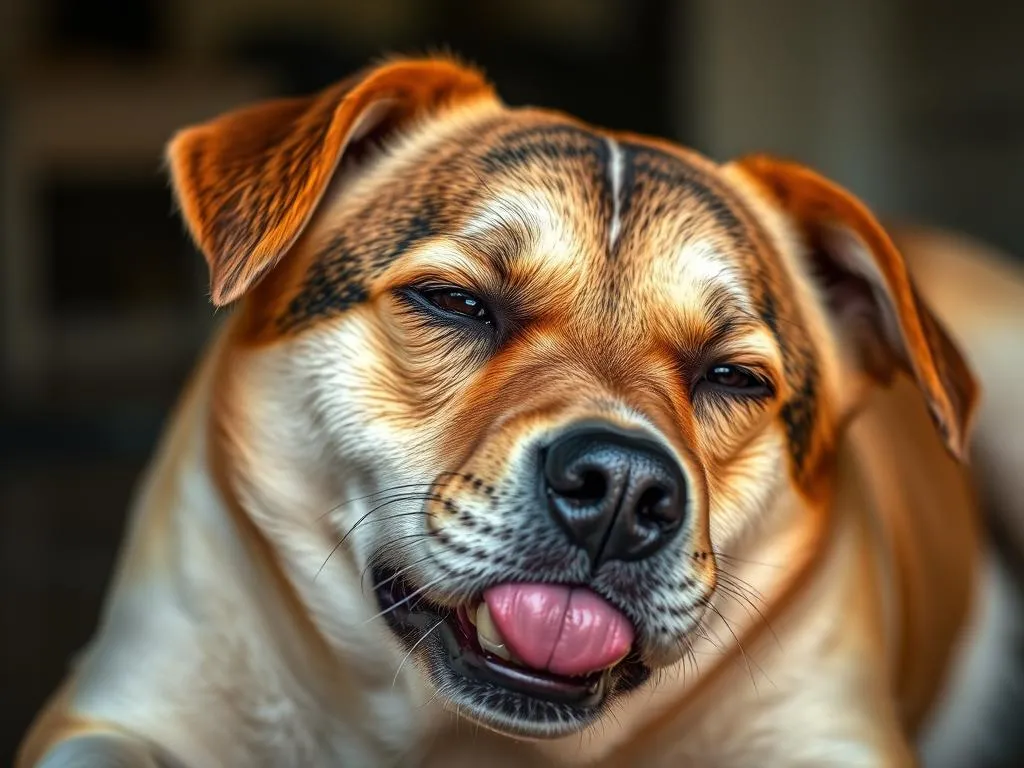
Introduction
Have you ever noticed your dog gently licking your wounds? This behavior can be puzzling, yet it is deeply rooted in canine instincts. In fact, studies show that dogs have been known to lick their own wounds and those of their owners for centuries. Understanding why dogs lick your wounds can enhance your relationship with your furry friend and provide insight into their behavior.
Understanding your dog’s behavior is crucial not only for strengthening your bond but also for ensuring their well-being. This article will delve into the reasons behind this licking behavior, addressing its instinctual roots, the implications for health, and how to manage it effectively.
The Nature of Licking in Dogs
Understanding Dog Communication
Dogs are exceptional communicators. They don’t rely solely on barks and growls; they also use body language and physical interactions to convey messages. Licking is one of those methods. It can express affection, submission, or even a request for attention.
Licking plays an essential role in dog behavior, serving as a social signal. For instance, dogs often lick each other as a form of greeting or grooming, which strengthens social bonds. Understanding this aspect of licking can provide insights into why your dog may feel compelled to lick your wounds.
Types of Licking
Not all licking behavior is the same. Here, we can differentiate between normal licking, excessive licking, and specifically, licking wounds. Normal licking may occur during grooming or as a sign of affection. Excessive licking, on the other hand, can indicate stress or anxiety and may require attention.
When it comes to licking wounds, it’s important to understand the context. Dogs may lick their own wounds as a self-soothing mechanism or to promote healing. Conversely, when they lick your wounds, it can be a display of affection, a way to seek attention, or even a response to your pain.
Reasons Why Dogs Lick Wounds
Instinctual Behavior
Healing Properties of Saliva
One of the primary reasons dogs lick wounds is due to instinctual behavior. Dog saliva contains enzymes and antibacterial properties that can assist in the healing process. For instance, studies have shown that saliva has the potential to inhibit the growth of certain bacteria, suggesting that licking could serve a practical purpose in wound care.
Evolutionary Perspective
Looking through an evolutionary lens, licking behaviors may have developed as survival mechanisms. In the wild, animals often groom each other and lick wounds to promote healing. This behavior has been carried over into domesticated dogs, who instinctively know that licking can help soothe injuries, both for themselves and their human companions.
Attention-Seeking Behavior
Another reason dogs lick your wounds may be to gain your attention. Dogs are adept at reading human emotions and often respond to cues from their owners. If you react positively—whether through petting, soothing words, or even laughter—your dog may interpret this as reinforcement for the behavior.
This connection between licking and positive reinforcement can create a cycle where your dog continues to lick wounds to elicit your response. Understanding this can help owners manage this behavior effectively.
Empathy and Comfort
Dogs possess a unique ability to sense human emotions. When they see you in pain, they may instinctively lick your wounds as a way of offering comfort and support. This behavior can be seen as an expression of empathy, showing that they care for your well-being.
When a dog licks your wound, it can be their way of saying, “I’m here for you.” This emotional connection can deepen the bond you share and highlight the sensitivity of dogs in responding to human emotions.
Anxiety and Stress Relief
For some dogs, licking wounds may act as a coping mechanism for anxiety. Dogs that experience stress may resort to licking as a way to self-soothe. If you notice your dog excessively licking wounds and showing signs of anxiety—such as pacing, whining, or destructive behavior—this could indicate that their licking is less about healing and more about managing stress.
Recognizing the signs of anxiety is essential for dog owners, as it may require different management strategies compared to licking that is primarily affectionate or instinctual.
Health Implications of Licking Wounds
Potential Risks of Licking
Infection Risks
While licking can have some healing benefits, it also carries potential risks. Dogs’ mouths are not sterile; they contain bacteria that can lead to infections. When a dog licks a wound—whether on themselves or on a human—it can introduce harmful bacteria into the injury, potentially complicating healing.
Delayed Healing
Moreover, constant licking can lead to delayed healing. The irritation from licking can exacerbate the wound, making it more challenging for it to close properly. If you notice your dog excessively licking a specific area, it’s crucial to monitor the situation closely.
When to Seek Veterinary Advice
If licking becomes excessive or harmful, it may be time to consult a veterinarian. Signs that licking is out of control include raw patches of skin, persistent irritation, or any signs of infection such as redness, swelling, or discharge. Early intervention can prevent complications and ensure your dog’s health is prioritized.
Managing Licking Behavior
Training Techniques
Redirecting the Behavior
To effectively manage your dog’s licking behavior, training is key. One of the most effective methods is redirecting the behavior. When you notice your dog about to lick a wound, gently redirect their attention to a toy or engage them in a game. This can help break the habit and provide a constructive outlet for their energy.
Positive Reinforcement Strategies
Incorporating positive reinforcement can also be beneficial. When your dog chooses not to lick a wound or engages in alternative behaviors, reward them with treats, praise, or playtime. This reinforces the desired behavior and encourages your dog to focus on healthy alternatives.
Using Protective Measures
Sometimes, protective measures are necessary to prevent licking. Products such as Elizabethan collars or bitter-tasting sprays can deter licking without causing harm. These tools can be particularly useful for dogs recovering from surgery or injuries, ensuring that they don’t exacerbate their wounds.
Providing Alternatives
Providing alternatives can also help manage licking behavior. Chew toys or interactive puzzles can keep your dog occupied and distracted from licking. Engaging them in regular physical and mental activities can reduce their urge to lick wounds and promote overall well-being.
Conclusion
In summary, understanding why dogs lick your wounds is crucial for all dog owners. From instinctual behaviors rooted in their evolutionary history to emotional responses and anxiety relief, licking serves multiple purposes for our canine companions.
By recognizing the potential health implications of licking, including risks of infection and delayed healing, owners can take proactive steps to manage and redirect this behavior effectively. Observing your dog’s behavior and consulting with professionals when necessary can enhance your bond and ensure their health and happiness.
As you navigate your relationship with your dog, remember to be attentive and responsive to their needs. Whether it’s offering comfort during moments of distress or redirecting attention away from wounds, your understanding can make a significant difference in your dog’s life.









